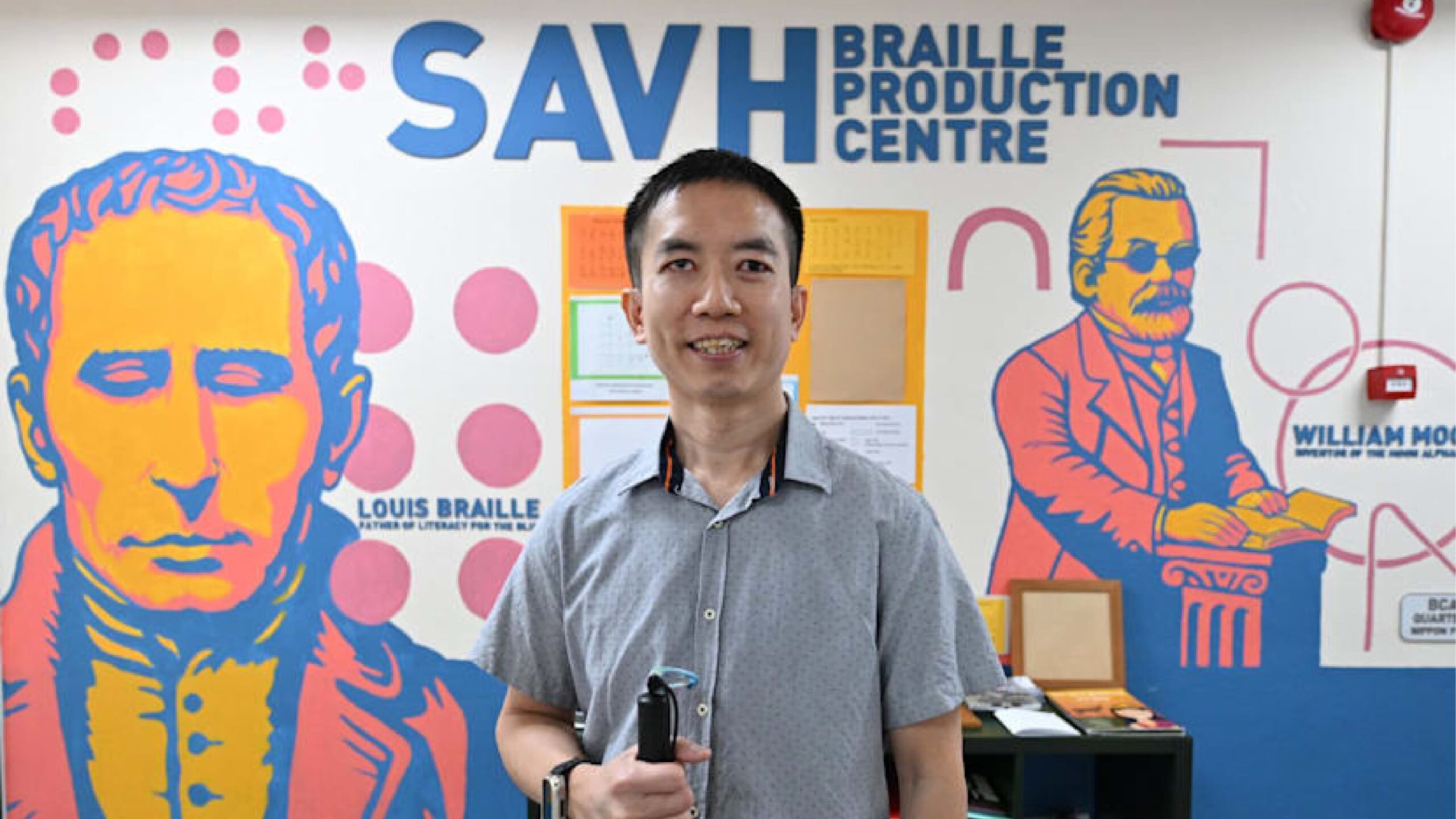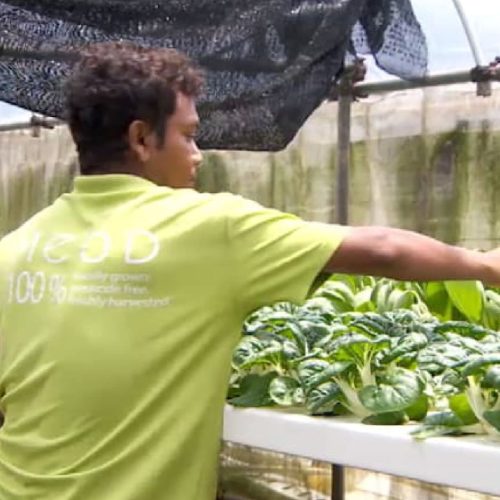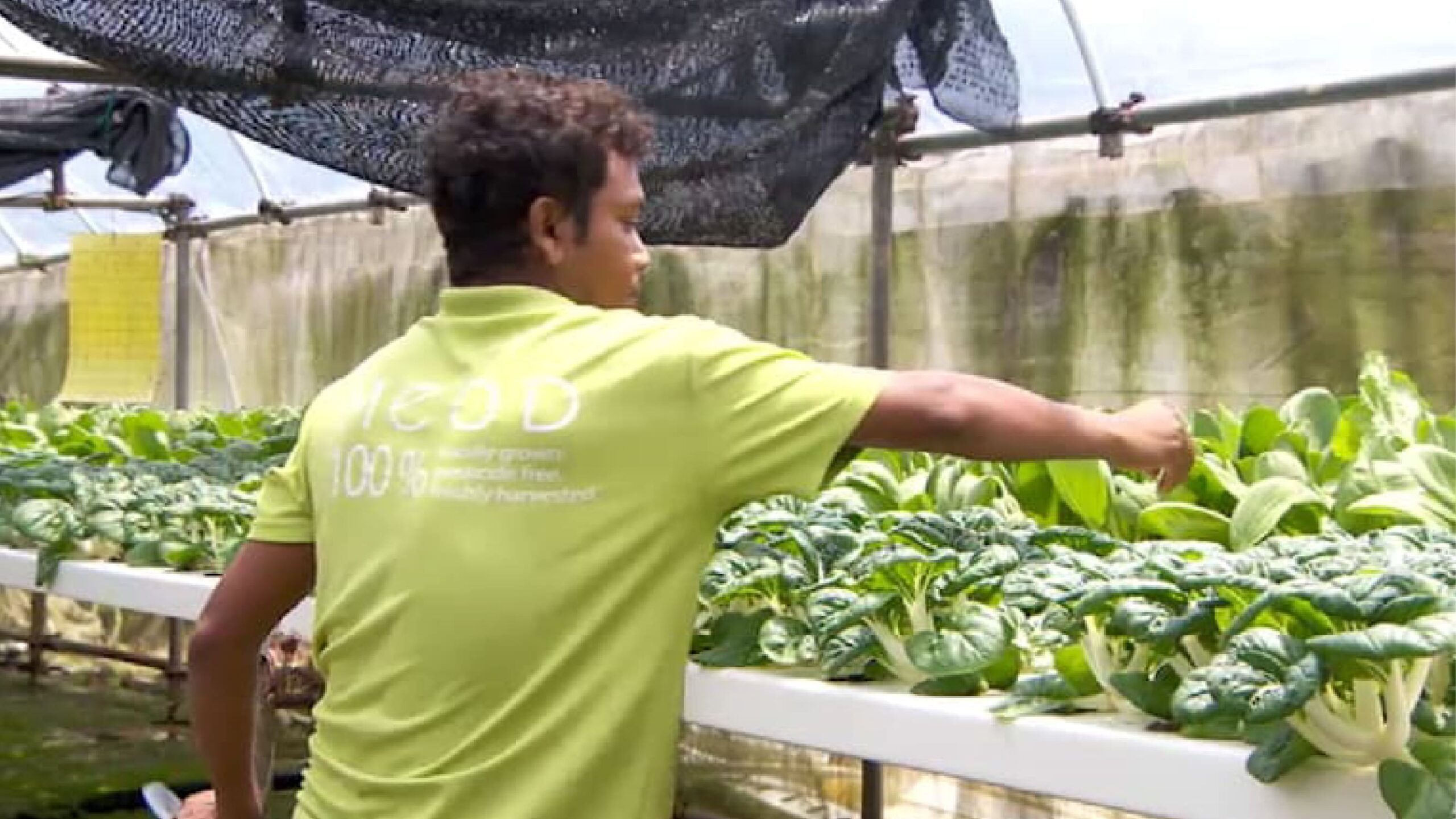October is a month dedicated to raising awareness about the visually impaired. In Singapore, one organisation is making a tangible difference by helping individuals reconnect with the written word — not through sight, but through touch.
At the Singapore Association of the Visually Handicapped (SAVH) in Toa Payoh, the Braille Production & Library Services Centre transforms printed text into braille materials, enabling the visually impaired to access education, literature, and essential information independently.
This centre plays a crucial role in ensuring that every dot, every space, and every raised line is not just text — but a bridge to inclusion.
Navigating the Space of Accessibility
For those without sight, space is more than just physical — it’s functional freedom. At SAVH, corridors are straight and wide, corners form perfect right angles, and floors are uncluttered. Every design choice ensures safe navigation for staff members who are visually impaired.
One of them is Jason Setok, 46, the supervisor at the Braille Production & Library Services Centre. Having lost his vision at 27 due to glaucoma, Jason took five months to master braille — a tactile writing system invented by Louis Braille in the 1820s.
Today, he moves confidently through the centre, finger-tapping along the walls to signal his presence. His workspace, though modest, holds powerful tools that help transform pages of print into raised dots that can be read by touch.
The Language of Dots
Braille is more than a code. It’s literacy, empowerment, and independence rolled into one. The system uses raised dots arranged in cells of three rows and two columns, each combination representing a letter, number, or symbol.
While most Singaporeans may recognize braille from lift buttons or restroom signs, few know about the extensive braille work done behind the scenes. The SAVH Braille Centre produces a wide range of materials, including:
-
Textbooks and exam papers for visually impaired students
-
Tactile diagrams and maps created from printed images
-
Braille name cards and signage for public institutions
-
Auditing services to ensure braille accuracy in public spaces
SAVH estimates that about 40,000 people in Singapore live with visual impairment, and the centre has served over 4,000 individuals so far. Many are referred by hospitals and rehabilitation institutions.
Why Braille Spacing Matters
For sighted readers, spacing might seem trivial. But for braille users, proper spacing determines whether a word makes sense or becomes unreadable.
Jason explained that errors often occur when companies or agencies emboss braille incorrectly after receiving soft copy files from SAVH. Some try to shrink the font size or reduce dot spacing — not realizing that braille is a fixed-width system, meaning each cell must maintain its original proportions.
“When the dots are too close together, the words lose meaning. It’s like reading smudged text,” Jason said.
This attention to detail also means that braille books are far larger than printed ones. A single novel, like Harry Potter, can weigh up to 10 kilograms once fully converted, with each page of braille fitting only about half the words of a regular A4 sheet.
Turning Textbooks into Touch
The SAVH Braille Centre works closely with schools that cater to visually impaired students, including Ahmad Ibrahim Secondary School, Bedok South Secondary School, and Dunearn Secondary School.
Requests come in for textbooks, exam papers, and daily assignments to be converted into braille. Jason’s team of five — three of whom are visually impaired — manage the entire process, from transcription to tactile diagram creation.
For younger students, learning materials are produced at Lighthouse School, also operated by SAVH. The institution supports children aged seven to eighteen with visual or hearing impairments.
The Art of Creating Tactile Diagrams
Beyond text, the centre also produces tactile diagrams — three-dimensional representations of images that allow students to “see” through touch. These can include mathematical graphs, scientific diagrams, or geographical maps.
However, converting visuals into touchable form is a meticulous task. Labels and notations must often be repositioned so that braille text remains legible. “We sometimes add dotted guiding lines to show which label refers to which part of the diagram,” Jason explained.
Every unnecessary visual element, such as artistic shading or decorative graphics, is removed to ensure clarity. In some cases, the team redraws diagrams from scratch using software before printing them on a ViewPlus embosser, a specialized machine capable of producing high-quality tactile images.
Why Braille Still Matters in a Digital Age
Even with the rise of assistive technologies like text-to-speech software, braille remains essential for literacy among the visually impaired.
“Braille is like learning to read and write,” Jason said. “It helps us understand spelling and structure. We don’t just listen — we learn through touch.”
Schools in Singapore still require visually impaired students to answer in braille during examinations. This reinforces the system’s continued relevance in education and communication.
More Than Just Words
For Jason, braille is not just a skill; it’s a lifeline. Before losing his sight, he worked at Philips testing plasma TVs. When glaucoma took his vision — and his career — he found new purpose through braille.
Now, as part of the SAVH team, he helps others rediscover their confidence and independence through the same tactile language that transformed his life.
From exam papers to public signage, from storybooks to science diagrams, braille remains a vital link that connects the visually impaired with the world of words — proving that even without sight, there are countless ways to see.








